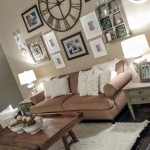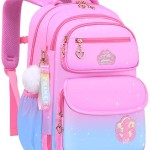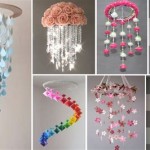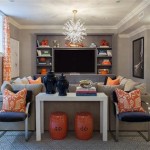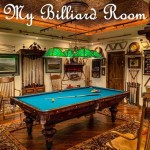How to Decorate Kids Room Walls: A Comprehensive Guide
Decorating a child's room offers a unique opportunity to foster creativity, imagination, and personal expression. The walls, in particular, serve as a blank canvas, ready to be transformed into a vibrant and stimulating environment. Careful planning and consideration of the child's age, interests, and developmental stage are crucial to creating a space that is both aesthetically pleasing and functionally beneficial. This article provides a comprehensive guide to decorating kids' room walls, covering various techniques, materials, and design considerations.
Understanding Age-Appropriate Design
The optimal décor for a child's room evolves significantly with age. Infants and toddlers require designs that are visually stimulating but also prioritize safety. Bold colors, contrasting patterns, and large, recognizable shapes are beneficial for visual development during this stage. However, it is essential to ensure that any wall decorations are securely mounted and free from small, detachable parts that could pose a choking hazard. As children mature into preschoolers and elementary school students, their interests become more defined. Wall décor can reflect these interests, incorporating themes related to animals, superheroes, nature, or hobbies. Interactive elements, such as chalkboard paint or magnetic boards, can also encourage creativity and engagement. For teenagers, the focus shifts towards personal expression and creating a space that reflects their individual style. This might involve incorporating artwork, posters, photographs, or more sophisticated color palettes.
Furthermore, the scale of the décor should be proportionate to the room's size and the child's stature. Overly large or busy patterns can overwhelm a small space, while too-small elements may get lost in a larger room. Considering the child's eye level when placing wall decorations ensures that they are easily visible and engaging.
Durability is another key factor to consider, especially in younger children's rooms. Wall decorations should be easy to clean and resistant to wear and tear. Washable paint, removable decals, and sturdy frames are practical choices.
Exploring Different Wall Decoration Techniques
Several techniques can be employed to decorate kids' room walls, each offering unique aesthetic and functional benefits. Paint is a versatile and cost-effective option, allowing for a wide range of colors, patterns, and finishes. Wallpapers offer a more textured and patterned surface, providing depth and visual interest. Decals and stickers provide a temporary and easily removable option, ideal for renters or those who prefer to change the décor frequently. Murals, either hand-painted or printed, can create a dramatic and immersive effect, transforming the entire room into a themed environment.
Paint offers significant advantages in terms of customization. Different paint types, such as matte, satin, or high-gloss, can create different moods and visual effects. Matte paint is ideal for hiding imperfections, while satin paint is more durable and easier to clean. Stencils and painter's tape can be used to create geometric patterns, stripes, or custom designs. Chalkboard paint provides a fun and interactive surface for drawing and writing, while magnetic paint allows for the display of magnets and other magnetic accessories. When choosing paint, it is crucial to select non-toxic and low-VOC (volatile organic compounds) options to ensure the health and safety of the child.
Wallpapers offer a wide variety of patterns, textures, and colors that can add depth and visual interest to a room. They can be particularly effective in creating a focal point or accent wall. Peel-and-stick wallpapers are a popular choice for renters or those who prefer a less permanent solution, as they are easy to apply and remove without damaging the walls. When selecting wallpaper, it is important to consider the room's size and lighting. Darker colors and larger patterns can make a small room feel smaller and more enclosed, while lighter colors and smaller patterns can create a sense of spaciousness. Consider also the durability and washability of the wallpaper, especially in high-traffic areas.
Decals and stickers are a quick and easy way to add personality and character to a room. They are available in a wide range of designs, from simple shapes and letters to elaborate scenes and characters. Decals are typically made of vinyl and can be easily applied to smooth surfaces. They are also relatively easy to remove, making them a good option for renters or those who like to change their décor frequently. When applying decals, it is important to clean the surface thoroughly and follow the manufacturer's instructions to avoid bubbles or wrinkles. Consider the size and scale of the decals in relation to the room's size and the height of the child.
Murals can transform an entire room into a themed environment, creating a dramatic and immersive effect. They can be hand-painted by a professional artist or printed on vinyl or fabric. Murals can depict landscapes, seascapes, forests, or any other scene that captures the child's imagination. They can also incorporate educational elements, such as maps, alphabets, or numbers. When choosing a mural, it is important to consider the room's size, lighting, and style. A well-designed mural can be a stunning focal point that enhances the overall aesthetic of the room.
Incorporating Functional and Decorative Elements
Beyond purely aesthetic considerations, wall decorations can also serve functional purposes. Shelves provide storage space for books, toys, and other items, while also offering a platform for displaying decorative objects. Hooks can be used to hang artwork, clothing, or other accessories. Corkboards and whiteboards provide interactive surfaces for displaying artwork, notes, and schedules. Mirrors can create a sense of spaciousness and reflect light, making the room feel brighter and more airy. The careful integration of functional and decorative elements can maximize the usability and visual appeal of the room.
Shelves are a versatile and practical addition to any child's room. They can be used to store books, toys, games, and other items, helping to keep the room organized and clutter-free. Shelves can also be used to display decorative objects, such as picture frames, figurines, and plants. When choosing shelves, it is important to consider the room's size, style, and the child's age. Floating shelves are a popular choice for smaller rooms, as they take up minimal space and create a clean, modern look. Shelving units with enclosed storage provide additional space for hiding clutter. Ensure that all shelves are securely mounted to the wall to prevent them from tipping over.
Hooks are a simple and effective way to hang artwork, clothing, backpacks, or other accessories. They can be used to create a designated spot for hanging jackets and hats, reducing clutter and promoting organization. Hooks can be made of various materials, such as metal, wood, or plastic, and come in a wide range of styles and designs. Decorative hooks can add a touch of personality to the room, while more functional hooks can provide a practical storage solution. When installing hooks, it is important to choose a location that is easily accessible to the child and to use appropriate mounting hardware to ensure that the hooks are securely attached to the wall.
Corkboards and whiteboards provide interactive surfaces for displaying artwork, notes, schedules, and other important information. They can also be used for drawing, writing, and brainstorming. Corkboards are ideal for pinning up artwork, photos, and reminders, while whiteboards are perfect for writing and drawing with dry-erase markers. These boards can be framed or unframed and come in a variety of sizes and shapes. Consider placing the board at a height that is easily accessible to the child. They encourage creativity and organization.
Mirrors can create a sense of spaciousness and reflect light, making the room feel brighter and more airy. They can also be used to add a touch of glamour and sophistication to the room. Mirrors come in a variety of shapes and sizes and can be framed or unframed. A large mirror can make a small room feel larger, while a decorative mirror can add a touch of personality. When placing a mirror, consider its reflection. Ensure that it reflects something visually appealing, such as a window or a piece of artwork. Safety is paramount when using mirrors in a child's room. Use shatter-resistant glass and securely mount the mirror to the wall.
Ultimately, decorating a child's room walls is a collaborative process that should involve the child's input and preferences. By considering their age, interests, and developmental stage, and by exploring different techniques and materials, it is possible to create a space that is both beautiful and functional, fostering creativity, imagination, and personal expression.

Kids Room Wall Ideas For Creative Child Development Blog Square Signs

30 Kids Room Decorating Ideas Tips For Boys Girls 2025

Kids Room Wall Ideas For Creative Child Development Blog Square Signs

7 Kids Room Decorating Tips To Create A Fun Space

Clever Kids Room Wall Decor Ideas Inspiration

Clever Wall Decor Ideas For Kids Rooms Circu Magical Furniture

Back To School Playroom Or Child S Room Decor Diy

10 Awesome Diy Ideas For Your Kid S Room

Children Bedroom Wall Design Deals

How To Decorate A Kid Friendly Room Style At Home

